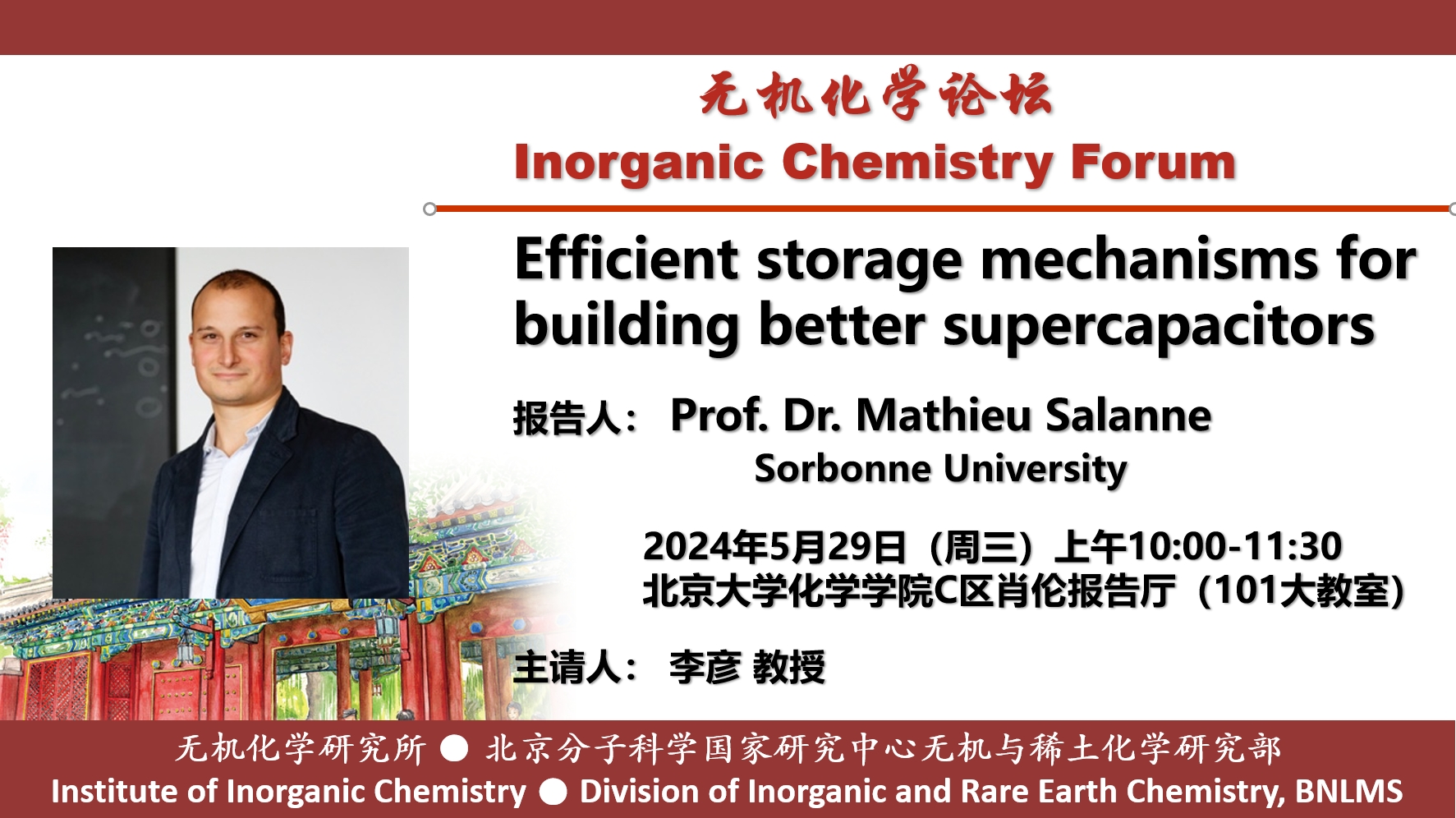时间:2024-05-23
来源: 77779193永利集团
访问量:

报告摘要
The electric double layer is generally viewed as simply the boundary that interpolates between an electrolyte solution and a metal surface. Contrary to that view, recent studies have shown that the interface between ionic liquids and metallic electrodes can exhibit structures and fluctuations that are not simple reflections of surrounding bulk materials [1]. The charge of the electrode is screened by the interfacial fluid and induces subtle changes in its structure, which cannot be captured by the conventional Gouy-Chapman theory.
In recent years, this topic has been more intensively addressed in order to develop more efficient supercapacitors [2]. The latter are electrochemical devices that store the charge at the electrode/electrolyte interface through reversible ion adsorption. In order to understand the molecular mechanisms at play, we have developed a molecular dynamics software allowing to study a variety of systems made of concentrated electrolytes such as ionic liquids or water in salts, in contact with electrodes of different geometries ranging from planar to nanoporous. A key aspect of our simulations is to use a realistic model for the electrodes, by allowing the local charges on the atoms to vary dynamically in response to the electrical potential caused by the ions and molecules in the electrolyte [3].
These simulations have allowed us to gain strong insight on the structure and dynamics of electrolytes at electrified interfaces. From the study of carbide-derived carbon electrodes, we have elucidated the microscopic mechanism at the origin of the increase of the capacitance enhancement in nanoporous carbons [4]. By comparing the charging mechanisms to the case of nanoporous graphene-based supercapacitors, the simulations allowed us to disentangle the effects of porosity as well as the ones of the carbon microstructure [5,6].
References:
1. Fedorov, M.V., Kornyshev, A.A., Chem. Rev., 114 (2014), 2978-3036
2. Salanne, M., Rotenberg, B., Naoi, K., Kaneko, K., Taberna, P.L., Grey, C.P., Dunn, B., Simon, P., Nature Energy, 1 (2016), 16070
3. Jeanmairet, G., Rotenberg, B., Salanne, M. Chem. Rev. 122 (2022), 10860
4. Merlet, C., Rotenberg, B., Madden, P.A., Taberna, P.L., Simon, P., Gogotsi, Y., Salanne, M., Nature Materials, 11 (2012), 306-310
5. Mendez-Morales, T. et al., Energy Storage Materials, 17 (2019), 88-92
6. Bacon, C. et al., Energy Storage Materials, 69 (2024), 103415
Biography:
Mathieu Salanne is professor of chemistry at Sorbonne University (Paris). His research field of interest is the simulation of electrolytes for energy production and storage, with a focus on methodological developments for the modelling of electrochemical interfaces. He graduated in chemical engineering from Chimie ParisTech in 2004 and obtained his PhD in 2006. He was appointed assistant professor at Sorbonne University in 2007 and promoted to full professor in 2016. He was group leader (ionic liquids and electrochemistry group) at the PHENIX laboratory from 2014 to 2021, and was appointed as director of the Institute for computing and data science in 2022. Since 2017 he is the leader of the theory group of the French network on electrochemical energy storage (RS2E). He also held a part-time excellence chair in high-performance computing at Paris-Saclay University from 2014 to 2018. He has published more than 170 peer-reviewed journal articles.
His research has been recognized by the IUPAP young scientist prize in computational physics in 2014 for the development of methods to allow realistic atomistic simulation of molten salts and ionic liquids in situations of relevance to electrochemistry. He obtained an ERC consolidator grant in 2017 for the project AMPERE (Accounting for the Metallicity of the electrode, the Polarization of the Electrolyte and Redox reactions in computational Electrochemistry). In 2020 he was appointed as a junior member of Institut Universitaire de France. He was member of the Editorial Advisory Board of the Journal of Chemical Physics (2020-2022), and currently serves as an Associate Editor for ACS Nano.
